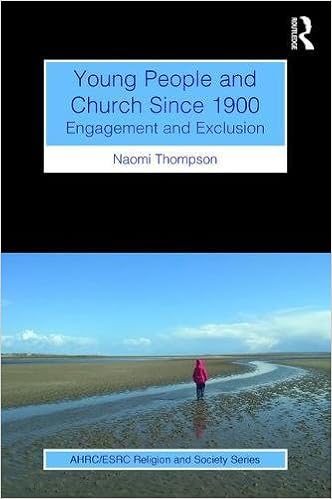With the news that churches are likely to stay closed for a while
and yet today 3 story shops like Primark are open.
After, messy, youth, dementia, forest, slow and any other prefix church, maybe its time for…
‘Shop – church’
Yes, that’s right.
Why not comply fully with government tax restrictions, physical distancing and start a new for autumn 2020- were going to call it:
‘Shop-church’.
Heres a few pointers, to help with this new intentional missional relational material approach.
There were plenty of empty shop fronts in shopping centres across the country, high streets were empty. Choose wisely, next to Primark, or the type of shop that will be hidden behind a large physical distance queue, and where there’s willing and maybe even unaware punters, sorry worshippers.
- In the shop front, make it look like any ordinary clothes shop, DIY shop, aromatherapy shop or betting shop, depending on the style you’re going for , comforting faith, blind faith, or a practical faith.
- Subvertively arrange the queue from the next door ‘Primark’ so that people have to physically walk through your church-shop before they get to Primark. The vibe you’re going for is Alton towers ghost train. But a human impatient shuffle. that processes along guided markings on the floor. After 3 months were barely able to not walk on brightly plastic covered stepping stones, so just divert the Primark queue around shop church, best guess is that no one will actually notice.
- By now you have realised that persons will move around shop church in intervals of how quickly Primark empties, this gives them opportunities to be guided around shop-church in a rhythmic and appealing way and experience shop-church in an authentic real way.
- To comply with physical distancing contactless payment automatically charge £5 per person as they pass through the door. This is obviously voluntary, well, its voluntary if you give it back to them, faith isnt cheap after all. Do remind people with large signs that explain that they will remain at least 200 metres away from that £5 at all times and is its a form of materialistic spiritual distancing.
- Once the people have snaked their way past the reception, where they have been screened for covid through a fingerprint test, which also logs their details and enables you to obtain all their details so to be Abe to invite them to home-group-shop-church on Wednesday nights.
- After which they are welcome, each person is given a pair of headphones, clinically clean naturally, and not unlike the machines that used to be in HMV stores around the UK, can select from 10 options:
- Classic Anglican
- Liberal evangelical Anglican (no I’m not sure either)
- Moderate Catholic
- Trying to be middle of the road evangelical
- Methodist
- Contemplative
- High Anglican
- Emergent church
- Messy Church
- Custom
Those who select 10 (Custom) are then given the opportunity to blend together the preceding 9 numbers and create the service in their headphones that’s perfect for them. Its an important decision, as then once the participants have walked around to the 4th area, the chemically clean stewards will be able to have the appropriate items for communion ready, or none.
7. Music will also be largely piped through the headphones, although, again, those who selected ‘Custom’ previously, can also choose either their own worship songs using their current iPod tunes, or a selection of additional CDS are abvaiable to choose from, these can be inserted into the Appropriate Reality Service Experience which hasn’t been named for its acronym. Please do have a range of CDs available, from Amy Grant to Celtic Worship, the best of Spring harvest to ‘praise him on the tubular bells’ , these will add to the experience.
8. Once kitted with headphones, and full selected, the participants will be ushered , physically distanced in to the first room, in the ongoing queuing system. Here they are encouarged to listen to the first 3 minutes on the headphones, in which they will join into the piped service as they walk, they should pay special attention to no one else ahead or behind them, for others are on a separate path and ARSE journey. As the walk, using the 2 meter cross symbols laid on the floor indicate, a continual blissful noise is made as participants sing along to the songs in the headphones and have no realisation that they are substantially out for tune. You do have to provide stewards with laughter distancing training for these can be delicate times.
9. The second room that the participants encounter is a delicate one, no its not the communion one, its the personal interaction one. For, though each service is different, they are timed so that it is in this space that something practical and interactive happens. The Messy church group head to a craft table, the Anglicans do an awkward look at each other, wave from distance and say ‘peace be with you’, those who selected evangelical, well, they do a bit more standing up and down without much sideways moving. Catholic and Contempltaives may have candles to light or stones to fondle. (all ceremonially washed and clinically cleansed, naturally) . There are additional pauses in the service to accommodate this practical movement, before..
10. The third and final room. Its communion. And given all the sensitivity, recently, all ill say is that depending on the selection, it arrives in the most popular form according to the choice. Though its messier for messy church.
After the Communion, a second and final song is played through the headphones. The final prayer, which as soon as the Amen is muttered, then participants are ushered through the final curtain..(and just like the many ghost rides..). into the gift shop.. where they give back the headphones and have an opportunity to maintain that once in a primark queue shop-church experience with a gift, a souvenir for others, or a postcard.
Where, after the experience, there are a number of economic growth tax paying products to purchase, from badges, bibles and CDs, Tea towels and the most ornate display of wooden crosses you could find. For, no visit to Shop-church, can be without the actual shop-church-shop experience. Our extensive research has shown that the ‘Praise him in the Primark queue’ is a popular slogan for the T shirts.
After making at least one purchase, participants will follow along the path of physical distancing, via the hand sanitiser out of the front door and back along the queue towards Primark. With, I would think the joy of the Lord in their shopping bag (other mugs are also available), knowing that their shopping went spiritual. When I say pointers, this is a franchise and ill sell it to you for £1200, which you can pay back easily after 300 service participants, and a business team will be on hand to offer you advise in receiving exponential growth, mostly through being always open when Primark is.
Its time to get truly innovative for the physical distance shopping generation, get relevant church, its time for Shop-church.






